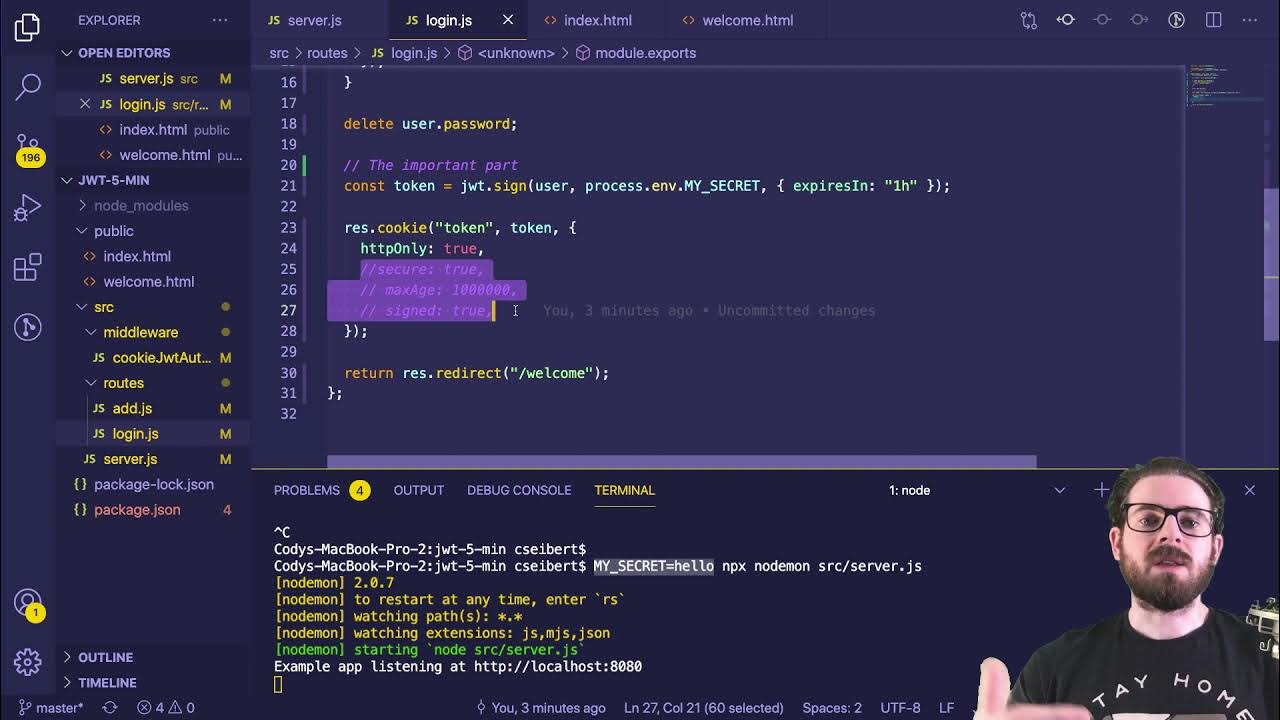[Legacy] Use Firebase for Auth in Wized
Summary
TLDRThis tutorial video guides viewers on integrating user authentication into web applications. It introduces the concept of out panels, demonstrates how to add user accounts using Firebase as a backend, and covers content protection. The video walks through setting up email and password logins, creating and binding authentication requests in Wist with Webflow, and implementing access control rules for protected content. It also touches on advanced features like conditional logic and user field customization.
Takeaways
- 🌐 The importance of user authentication for web apps and services is highlighted as a cornerstone for many businesses.
- 🔐 The script introduces the concept of 'out' panel, which is a tool for managing user authentication and content protection within an app.
- 📝 The video will guide through the process of adding user accounts to a web app and protecting content using 'out' panel capabilities.
- 🔑 Authentication options include simple login with email/password using Airtable or more complex systems with Firebase and social media logins.
- 🛠️ The tutorial uses Firebase as the backend and Webflow with 'Wist' on the frontend to demonstrate the setup of user authentication.
- 🆓 Starting with a free Firebase account, the script walks through creating a project, enabling email/password authentication, and setting up an app within Firebase.
- 🔄 The process involves binding email and password fields from the signup/login forms to the corresponding requests in the 'out' panel.
- 📈 After creating a user, the script explains how to set up request states and conditions to redirect users based on the success of the request.
- 🔄 The 'Load User' request is configured to trigger on page load to ensure user information is available on protected pages.
- 🚫 Access control rules are set up in the 'out' panel to redirect users to the login page if they are not authenticated on protected pages.
- 🔄 The script concludes with setting up a logout request and action, ensuring users are logged out and redirected to the login page upon logout.
Q & A
What is the purpose of user authentication in web applications?
-User authentication is essential for securing web applications, allowing access control and protecting content, which can be a cornerstone of a business.
What is the 'out panel' mentioned in the script?
-The 'out panel' likely refers to an interface or set of tools for managing user authentication and content protection within a web application.
What are the options for authentication backends mentioned in the video?
-The options mentioned include using Airtable for a simple login with email and password, and Firebase for a more complex system allowing logins with various providers like Facebook and Google.
How can content protection be implemented in a web application?
-Content protection can be implemented by choosing to protect an element, a request, or whole pages within the application.
What is the first step in setting up user authentication with Firebase?
-The first step is to create a free Firebase account and then create a new project with a chosen name.
Why might one choose not to enable analytics in a Firebase project?
-Analytics might be disabled if they are not needed for the specific project, as in the case of the video where the creator does not require it.
What is the process for adding Firebase to an application using Wist?
-The process involves going to Wist, adding a new app, selecting Firebase, and then adding the project ID, app ID, and API key.
What is the purpose of the 'create user' request in the authentication process?
-The 'create user' request is used to register new users with their email and password, which is essential before they can log in or access the application.
How can the login process be set up using the script's example?
-The login process is set up by creating a 'sign in user' request in Firebase, binding the email and password fields from the login form, and applying an action to the login button to perform the request.
What is the significance of the 'load user' request in content protection?
-The 'load user' request retrieves information about the logged-in user and is typically triggered on page load to ensure that content protection is applied correctly across the application.
How can access control rules be set up to protect pages in the application?
-Access control rules are set up in the 'out panel' by creating conditions that check if the user is logged in and, if not, redirect them to the login page.
What is the final step in the authentication process shown in the video?
-The final step is setting up a 'logout' request and applying an action to the logout button so that when clicked, the user is logged out and potentially redirected to the login page.
Outlines

Cette section est réservée aux utilisateurs payants. Améliorez votre compte pour accéder à cette section.
Améliorer maintenantMindmap

Cette section est réservée aux utilisateurs payants. Améliorez votre compte pour accéder à cette section.
Améliorer maintenantKeywords

Cette section est réservée aux utilisateurs payants. Améliorez votre compte pour accéder à cette section.
Améliorer maintenantHighlights

Cette section est réservée aux utilisateurs payants. Améliorez votre compte pour accéder à cette section.
Améliorer maintenantTranscripts

Cette section est réservée aux utilisateurs payants. Améliorez votre compte pour accéder à cette section.
Améliorer maintenantVoir Plus de Vidéos Connexes

Flutter Tutorial For Beginners #9 - Adding Google Authentication with Firebase

All about Firebase Authentication 🔥 | Login & Signup | Jetpack Compose

Auth Page Logic | To Do App | FlutterFlow for Beginners

Setting Up Firebase Auth with React: Step-by-Step Tutorial

Learn JWT in 10 Minutes with Express, Node, and Cookie Parser

NextJS + Firebase Tutorial 🔥 // Hooks, Firestore, Authentication & Functions!
5.0 / 5 (0 votes)
